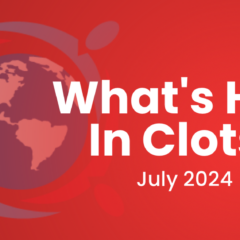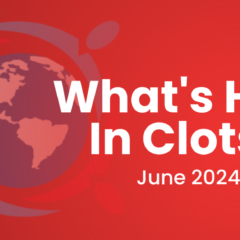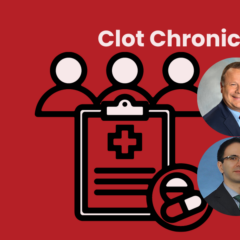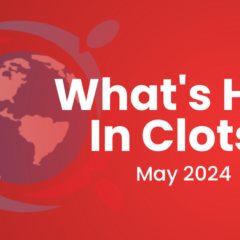Last updated on
Clot Chronicles: Treating Cancer-Associated VTE — Challenges, Caveats, and Controversies
Good day. I’m Dr. Gary Raskob, and I’m speaking to you today from the University of Oklahoma Health Sciences Center in Oklahoma City, Oklahoma. Today on Clot Chronicles, I’ll be discussing the treatment of cancer-associated venous thromboembolism (VTE).
Treatment of patients who develop VTE in association with cancer is quite challenging for several reasons. First, these patients have an increased risk of recurrent thromboembolism and an increased risk of bleeding compared to similar patients with thrombosis who do not have cancer. But in addition, there are some patient- and cancer-related factors that influence the approach to treatment.
Now historically, low-molecular-weight heparin (LMWH)—given for both initial treatment and continued as the long-term treatment—has been the approach of choice recommended by evidence-based practice guidelines. This practice dates back to the early 2000s to a landmark study, which demonstrated that using LMWH in this way was more effective than using just an initial course of LMWH followed by oral anticoagulation with a vitamin K antagonist (such as warfarin).
Now recently, with the advent of the direct oral anticoagulants (DOACs) over the last 10 years, the treatment of the cancer patient was a target to improve the quality of life and outcomes for these patients by potentially avoiding the need for these patients to inject themselves for many months. And over the last 3 years or so, we’ve had multiple clinical trials completed evaluating the DOACs in patients with cancer-associated VTE. In 2020, the National Comprehensive Cancer Network (NCCN) revised their recommendations for the treatment of cancer-associated VTE such that now the DOACs are the preferred approach for patients with VTE and cancer who do not have gastrointestinal (GI) cancer and specifically, who do not have significant intraluminal gastric or gastroesophageal tumors or other high-risk factors for bleeding.
And so, the DOACs provide an important advance for these patients without GI cancer. It’s clear that they’re as effective—with similar bleeding rates to the LMWH regimens—and can be, therefore, given and help patients avoid the need for injecting themselves for many months. Now among patients with gastroesophageal or gastric tumors—particularly intraluminal tumors—the DOACs either should not be used, or used with caution, because of an increased risk of bleeding in these patients. Nevertheless, fatal or very severe bleeding occurs similarly to LMWH. Most of the excess bleeding does occur from the upper GI and is manageable with standard measures. But nevertheless, the increased risk of bleeding is a tradeoff to be discussed with patients that is associated with the use of DOACs.
In considering then other potential controversies and caveats regarding the use of the DOACs and anticoagulation in the cancer patient with VTE, there are issues like the duration of treatment. It is generally accepted that treatment be given for a minimum of 6 months, but the optimal duration remains uncertain. Specific approaches in people with moderate renal impairment or other considerations, potential interactions with cancer drugs and other issues like management in patients with thrombocytopenia or patients with brain metastases, remain somewhat controversial and are areas of ongoing investigation.
We’re pleased that we are able to bring together a group of experts in this field to summarize and discuss this area in a recent publication of The Oncologist that really highlights the evidence for the use of the DOACs and gives the history of treatment of these types of patients and then outlines for clinicians some of those unresolved areas and the best guesses and suggestions of some experts who deal with these patients every day. And so we welcome you to read that publication, and we welcome your feedback on that.
This is Dr. Gary Raskob for Clot Chronicles, and I thank you for your attention.



